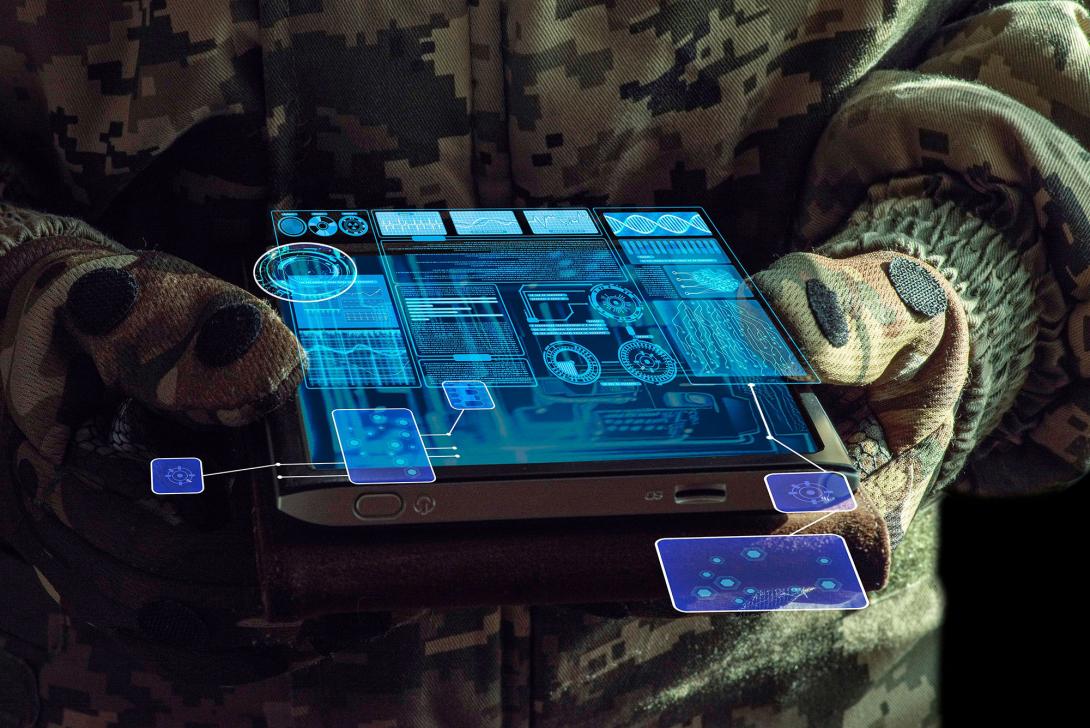President's Commentary: A Look Back at the Future for 2025
It is 2025, and I cannot help but reminisce about the future we planned for our warfighters.
While the U.S. military has used computers since the 1950s, it was in the 1990s that our armed forces focused on a fully digitized future.
For example, in 1994, the Army created the Army Digitization Office (ADO) to “oversee and coordinate the integration of Army battlefield digitization activities,” according to History of the Army Digitization Office, an Institute for Defense Analysis paper written by Susan J. Wright in 2020.
Some may recall the ADO’s Digitization Master Plan published in 1995 and the Army XXI concept, which called for the future force to “harness the power of information processing technologies with evolving doctrine and organizational development to ensure decisive victory in any future conflict,” as Col. Steven A. Emison, then-ADO chief of requirements and evaluation, wrote in the Army’s RD&A [Research, Development and Acquisition] publication in the fall of 1997.
Then-Army Acquisition Executive Robert Walker wrote in that same publication that, “We envision a new battlefield where information is gathered, processed, and used differently than ever before” and that the future force would have “greater lethality, versatility, and strategic and operational mobility.”
The Army used a series of innovative live events known as Advanced Warfighting Experiments (AWEs) to learn about available technologies and how they might be used on the battlefield. Systems or capabilities that showed promise during the AWEs included unmanned aerial vehicles; ground-based sensor radars; slew-to-cue Avenger, a self-propelled surface-to-air missile system; and the Applique computer system, which consisted of four basic versions connected via radio.
The Applique was the early prototype for the Force XXI Battle Command Brigade and Below system, which provided a “Tactical Internet,” a central element to modernization efforts.
The Air Force, meanwhile, developed a strategic vision calling for a combined air and space force. To aid that transition, the Air Force adopted a concept first used by the Army: battle labs, Defense News reported in December 1996.
The Air Force also was developing the airborne laser system to destroy tactical ballistic missiles in the boost phase. While that program was ultimately scrapped, the High Energy Laser with Integrated Optical-dazzler and Surveillance system is now an operational Navy weapon defending against manned and unmanned aircraft, missiles and boats. And the Army’s Indirect Fire Protection Capability-High Energy Laser prototype offers 300 kilowatts of power and is designed to defend against unmanned aerial systems, munitions and cruise missiles.
It was also in the 1990s that the Defense Department began pushing for more information sharing, greater interoperability, joint acquisition programs and joint operations. The services were often criticized for fielding individual command, control, communications and computers (C4) systems, prompting the Pentagon to develop a C4 ranking system to determine which programs were “crown jewels” and which could be sidelined.
I will leave it to others to determine how well we are delivering the future we envisioned roughly 40 years ago and to predict where we will go from here. But we absolutely must continue giving our warfighters and decision-makers the edge in solving cyber domain challenges to counter global aggression and prevail against any competitor.
Experts speaking at AFCEA International conferences continually stress the value of innovation and leadership in the digital age. The consensus is that we need to align the strategy and resources to enable the rapid integration of new technologies, operational concepts and training needed to continually adapt to evolving threats and fight and win the race for emerging technologies. Doing so will take strong partnerships between government, military, industry and academia to achieve the velocity and agility required to outpace our adversaries in the digital arena.
And I promise AFCEA will continue to be there, hand in hand, step by step, sparking discussions, sharing information, fostering partnerships and finding solutions for our warfighters far into the future.
Happy New Year to you all.





Comments